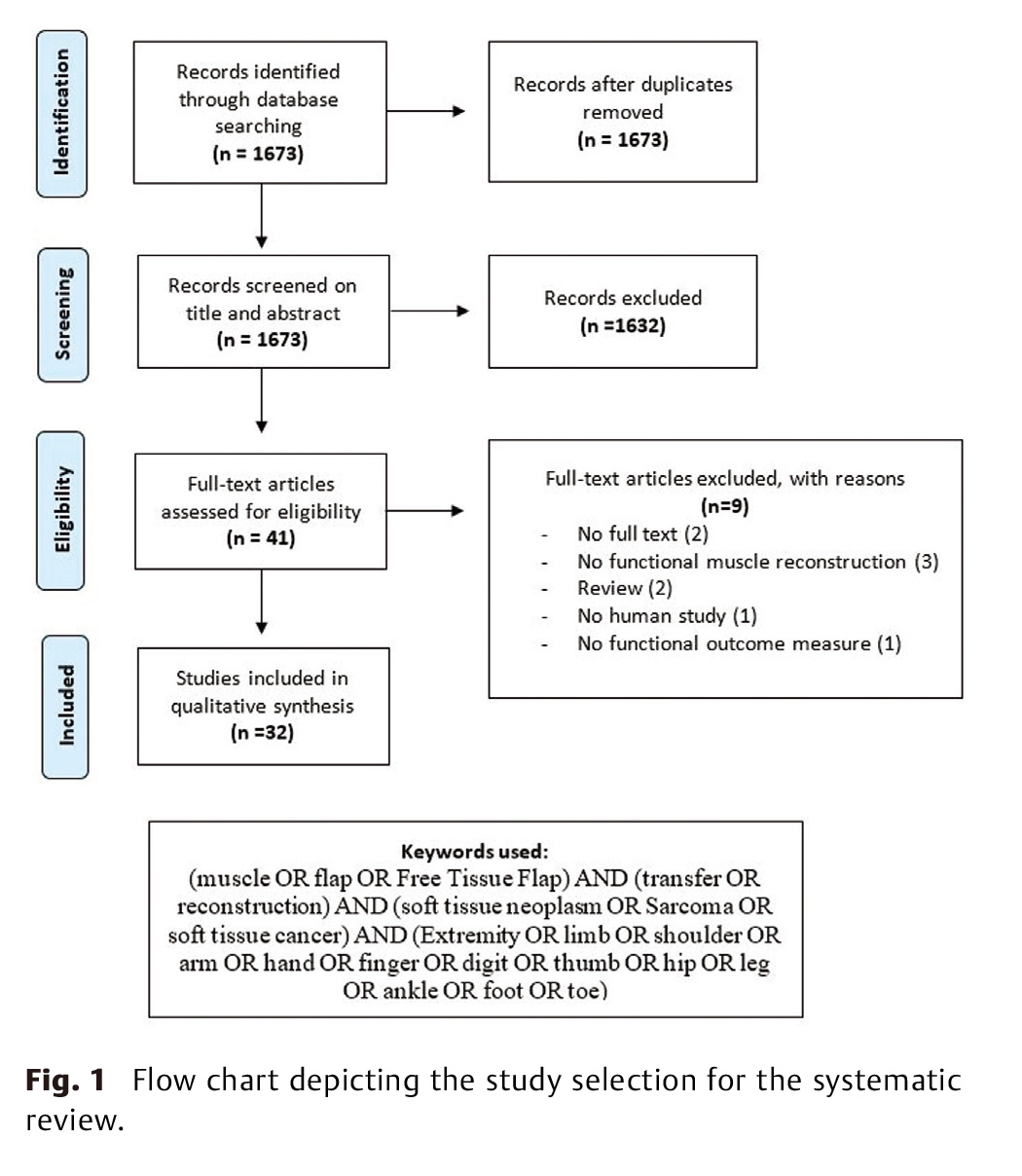
Issue 03 · Volume 39 · March 2023
HIGHLIGHTED ARTICLES
Journal of Reconstructive Microsurgery 最新一期现已上线,欢迎免费阅读本期精选论文。
功能性肌肉转移(FMT)可以为肿瘤性肢体缺损患者提供伤口闭合并恢复足够的肌肉功能。在本期精选论文中,作者描述了其机构在肿瘤切除术后进行FMT的经验,并对这种不常见的手术的现有文献进行了系统回顾和荟萃分析。
Original Article
Functional Muscle Transfer after Oncologic Extremity Resection
Abbas M. Hassan, Eliora A. Tesfaye, Abhi Rashiwala, Margaret J. Roubaud, Alexander F. Mericli
The meta-analysis consisted of seven studies with 70 patients overall, demonstrating a mean Medical Research Council (MRC) score of 3.78 (95% confidence interval: 2.97–4.56; p < 0.01). The systematic review included 28 studies with 103 patients. Receipt of adjuvant chemotherapy was associated with significantly lower mean MRC score (3.00 ± 1.35 vs. 3.90 ± 1.36; p = 0.019). Seventy-four percent of the patients underwent free FMT, with the most common donor muscle being the latissimus dorsi (55%). The flap loss rate was 0.8%. Neoadjuvant chemotherapy (p = 0.03), radiotherapy (p = 0.05), pedicled FMTs (p = 0.01), and a recipient femoral nerve (p = 0.02) were associated with significantly higher complication rates. The institutional retrospective review identified 13 patients who underwent FMT after oncological resection with a median follow-up time of 21 months (range: 6–74 months). The most common tumor necessitating FMT was undifferentiated pleomorphic sarcoma (77%), and the most common donor muscle was the latissimus dorsi (62%). A high body mass index was associated with prolonged neuromuscular recovery (R = 0.87, p = 0.002).

